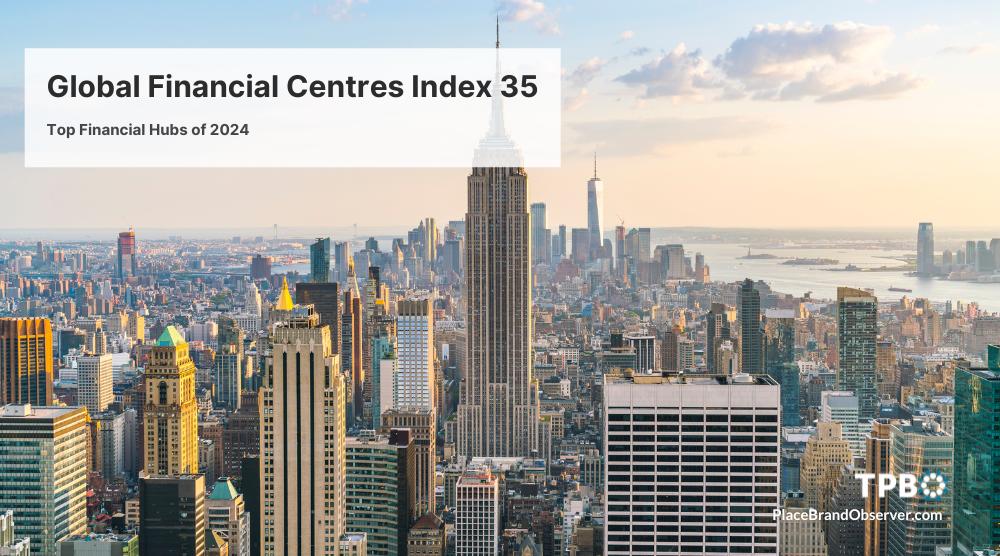The financial world is constantly evolving, and staying ahead of the curve requires an in-depth understanding of global financial centres. The latest Global Financial Centres Index (GFCI) 35, published in March 2024, offers insights into the competitiveness and attractiveness of 133 financial hubs worldwide.
Jointly produced by Z/Yen Partners in London and the China Development Institute in Shenzhen, this report is a valuable reference for policy makers, investors, and professionals in the financial services industry.
Let’s dive into the key findings of the latest edition.
Key Highlights from GFCI 35
The GFCI 35 report underscores the importance of innovation, sustainability, and collaboration in maintaining the competitiveness of financial centres. Here are the key takeaways:
- Stability and Reputation: These remain crucial, but reputation alone is insufficient without genuine improvements in partnerships, technology adoption, and inclusive growth.
- Regulatory and Development Activity: Emphasizing green finance, digital technology impacts, and skill development is essential.
- Talent Pool Development: A strong emphasis on professional development and open immigration policies is critical for future growth.
Top Financial Centres of 2024
| Rank | City |
| 1 | New York |
| 2 | London |
| 3 | Singapore |
| 4 | Hong Kong |
| 5 | San Francisco |
| 6 | Shanghai |
| 7 | Geneva |
| 8 | Los Angeles |
| 9 | Chicago |
| 10 | Seoul |
Biggest Movers and Shakers
| City | Change in Rank |
| Sao Paulo | 21 |
| Wellington | 15 |
| Reykjavik | 14 |
| Kigali | 14 |
| Miami | -14 |
| Helsinki | -12 |
Regional Analysis
Western Europe
- Leaders: London continues to dominate.
- Rising Stars: Reykjavik (+14), Glasgow (+9), Jersey, and Lugano (+12 each).
- Declines: Berlin (-9), Munich (-10), Copenhagen (-9).
Asia/Pacific
- Leaders: Singapore leads, followed by Hong Kong.
- Notable Climbers: Melbourne (+11), Wellington (+15).
- Declines: Osaka (-4).
North America
- Top Cities: New York, San Francisco, Los Angeles, Chicago.
- Rising: Montreal (+8), Toronto and Calgary (+7 each).
- Declines: Miami (-14), Atlanta, and Vancouver (-9 each).
Eastern Europe & Central Asia
- Leaders: Astana, Tallinn, Prague.
- Rising: Only Tallinn and Almaty improved.
- Declines: Prague (-7), Riga (-10), Athens (-9).
Middle East & Africa
- Leaders: Dubai, Abu Dhabi, Tel Aviv.
- Notable Climbers: Kigali (+14).
- Declines: Doha (-10), Riyadh (-9).
Latin America & The Caribbean
- Leaders: Cayman Islands, Sao Paulo, Barbados.
- Rising Stars: Sao Paulo (+21), Barbados (+11), Rio de Janeiro (+10).
- Declines: Cayman Islands (-7), British Virgin Islands (-8).
Methodology of GFCI 35
The GFCI uses a factor assessment model, combining both survey responses and statistical data to create a comprehensive ranking. Key components include:
- Survey: Ratings from financial services professionals collected through an online questionnaire.
- Statistical Model: Quantitative data from 145 instrumental factors provided by third parties such as the World Bank, the Economist Intelligence Unit, the OECD, and the United Nations. These factors are grouped into five areas:
- Business Environment: Economic stability, regulatory environment, and infrastructure.
- Human Capital: Education and talent availability.
- Infrastructure: Physical and digital infrastructure.
- Financial Sector Development: Depth and sophistication of financial markets.
- Reputation: Brand, status, and overall competitiveness of the financial centre.
About Z/Yen
Founded in 1994, Z/Yen is a leading think-tank by Long Finance, specializing in finance and technology. The GFCI was first released in March 2007 and continues to provide crucial insights into the competitiveness of global financial centres.
Enjoyed this update on the Global Financial Centres Index 2024? Visit the GFCI 35 report for details on rankings and methodology.
Want more? Explore our City Observatory for snapshots of how major cities around the world compare in terms of economic performance, city brand strength, sustainability and reputation.


